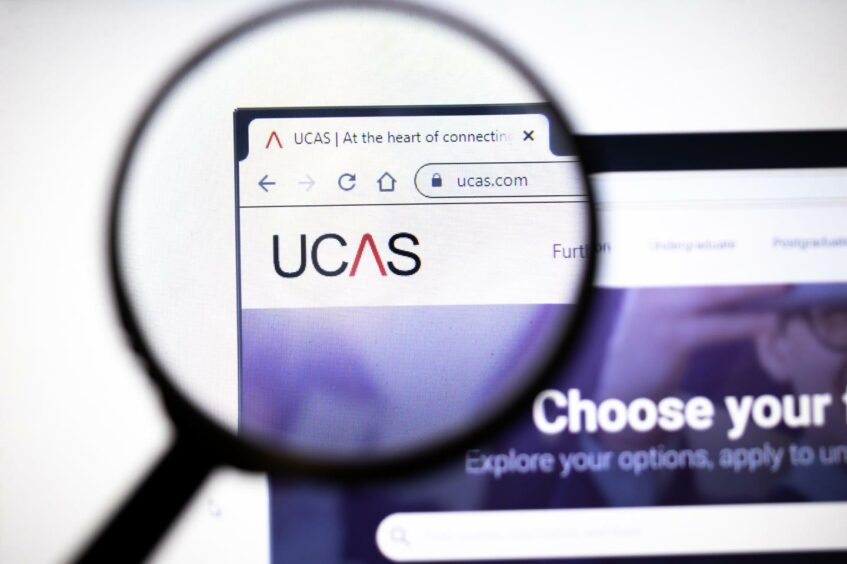As the UCAS deadline draws close, we lift the lid on the university applications process and answer the burning question: how on earth do you write a personal statement?
What is UCAS?
UCAS – or the Universities and Colleges Admissions System – manages the application process for every higher and further education body in the UK. This includes medical schools, veterinary schools, dentistry and teacher training. It also includes Oxford and Cambridge.
A couple of little-known facts about UCAS: It’s an independent charity, which receives no government funding. It also doesn’t just deal with universities and colleges – UCAS can connect people up with opportunities in apprenticeships, and other learning opportunities, too.
“Having a single, online admissions system means all students apply in the same way,” explains Courteney Sheppard, head of customer contact at UCAS.
“There’s no one-upmanship, no pandering to any particular institution and we don’t funnel people towards certain courses. It’s accessible, efficient and fair.”
What’s involved in applying?
Through UCAS, you can apply to up to five courses and universities. It’s a standardised process: every applicant records their personal information and their grades (usually predicted), then also uploads a personal statement and reference. Most applications are done through school, with support from your guidance teacher or careers adviser.
For 2022 admissions, the main deadline is 6pm on January 26. This is called the ‘equal consideration’ deadline – so while you can technically apply up until June 30, you need to have your application in by January to have equal consideration by all your choices. After June 30, applications automatically go into ‘clearing’ – more on that below.
Please note: Oxford, Cambridge and most medicine, veterinary and dental schools have an earlier deadline of October. Check the UCAS site for 2023 deadlines.

How do I pick my five courses?
You might think your five choices are simply based on your interests, but it’s worth being strategic here. Your personal statement has to explain why you want to study a particular subject, so while you can pick five wildly different courses, it’s not recommended.
Courteney has this advice: “Students should look at which universities offer the course they’re interested in, and then choose universities that are broadly achievable for them.
“As a guide, I’d suggest choosing at least one that’s ambitious – a bit of stretch for you in terms of your likely grades. Then have two or three safe bets to fall back on. Finally, pick one or two wild cards – these could be slightly different courses or subjects, or a course that you’re almost guaranteed to be accepted to.”
The exception is in medicine and veterinary medicine. Due to these highly competitive fields, one of your five choices should be something outside of medicine. Similarly, you can’t apply to both Oxford and Cambridge in the same year.
What happens next?
Universities have until May 19 to make a decision (the 2022 deadline is later than usual – it’s generally March). There are three potential responses: an unconditional offer, a conditional offer or a rejection.
A conditional offer is usually dependent on you getting specific grades in your exams, since the UCAS process is based on your predicted results.
If you decide to accept an unconditional offer, your place is agreed and your other choices will disappear. If you pick a conditional offer, you will be asked to also pick one back-up. This could be a second conditional offer (likely with lower entry requirements) or an unconditional. Think carefully here about how much risk you want to take.
This year’s results day is August 9, and UCAS will receive your results at the same time as you do. When you log into the UCAS portal you will be able to view your universities’ decisions.
If you didn’t meet the conditions for your first choice university or course, the system will automatically default to your back-up.
What if I don’t get in?
Don’t panic. Universities run a ‘clearance’ system to give students the best chance of finding a place. Clearance deals with two sets of circumstances: the first, where you previously rejected an unconditional offer, but didn’t meet the conditions for your first choices. In this case, you can immediately call the university or course you declined and ask to be reconsidered.
The second set of circumstances are happier – you may have exceeded all expectations in your exams and wish to apply to a university you didn’t even consider applying to before.
Either way, clearance is a very stressful time, but there’s lots of support and guidance available through UCAS and the universities too.
The University of Aberdeen has created a handy video for parents supporting their children through the process.
How to write your personal statement
It’s 4,000 characters. 47 lines. Yet it can feel like your whole future hinges on getting those right. We spoke to UCAS and universities in the north-east for their top tips.
Talk to someone you trust – and press record
“It can be hard to write about ourselves, but most people find it easier to talk. Sit down with someone you trust, grab your phone, and hit record. Simply talk to them about your interests, your skills and your plans. When you listen back, you’ll be surprised how many things you can tease out for your personal statement.”
Helena Ziegler, University of Aberdeen
The big three: evidence, rationale and inspiration
“Think about what in the world intrigues you. Why do you want to study this? What evidence and research do you have to back this up? The key components of a personal statement are evidence, rationale and inspiration.”
Courteney Sheppard, UCAS
Be specific about the course you’re applying to
“We’re looking for a genuine sense of interest in the subject and a brief explanation of why you would be suitable for the course. Make sure you highlight key transferrable skills from prior study, work, volunteering, hobbies, or life experiences. Tell us where you hope the course will take you. Be honest.”
Kathleen Moran, University of the Highlands & Islands
Show an interest in the world
“Tell us about your achievements and interests outside of school – any clubs you’re a member of, volunteering activities, work. Basically, your life outside of study. We want to know, do you engage with the world? Bring yourself to life, from a name on a file to a personality with interests.”
Helena Ziegler, University of Aberdeen
Avoid cliche
“Many students trip themselves up by trying to write grand statements. Don’t say you’ve wanted to be a doctor since you were two – that’s a lie. Tell us what genuinely triggered your interest in a subject.”
Courteney Sheppard, UCAS
Don’t start at the start
“The opening line is the hardest part. Get the evidence, rationale and inspiration part written first, then add a conclusion that explains why you want to do the course. It doesn’t have to be fancy, just genuine. Now circle back to the start and write the opening line. Tell us what triggered your interest – was it a personal event, an experience, even a video you saw?”
Courteney Sheppard, UCAS
Be yourself
“Writing your personal statement is often the most daunting part of the process but there’s no need to worry. This is your opportunity to tell us you’re the right person for the course. It’s also a chance to showcase your personality, not just your academic achievements.”
Georgina Miles-Guest, Robert Gordons University
More from the Schools & Family team
Nursery inspection reports: How does the childcare in your area rate?
Are young people turning to faith? Teens more likely to believe in God

